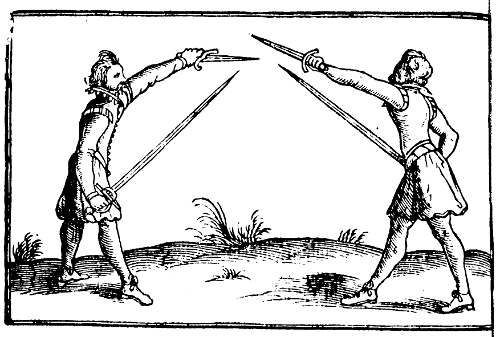Swetnam Ch. 12 first the true gard of rapier and dagger for the defence either of blow or thrust
This is part of an ongoing project to summarize and provide SCA focused commentary on The Schoole of the Noble and Worthy Science of Defence by Joseph Swetnam, published in 1617.
For links to the other sections of the Swetnam Project please go here.
I am using this facsimile: http://tysonwright.com/sword/SwetnamSchooleOfDefence.pdf for the project.
This first subsection of chapter twelve introduces us to the basic guard for the Rapier and Dagger
The true guard for the defence, either of blowe, or thrust, with Rapier and Dagger, or Sword and Dagger.
Keep your rapier hand inline with the pocket of your hose, without bending the elbow, while your dagger hand should be inline with your left cheek, with your arm outstretched (not bowing the elbow), and with your rapier and dagger points within two or three inches of each other. Make sure that you can see your opponent clearly, and that your left arm is high enough not to obscure your view – you should be able to see your opponent with both eyes. Keep your opponent centered between your rapier and dagger.

Have your head angled slightly toward the right shoulder, and have your shoulders square to your opponent, slightly tilted forward. Keep your thumb on the nail of your fore finger, rather than upon the blade of your weapon (which was the current fashion) so that you have a more secure grip upon your sword. The heel of your right foot should be in line with where your toes meet your foot.
Use the picture as an example, but if there is a discrepancy follow the words, not the picture.
 The seven principles are:
The seven principles are:
You must be logged in to post a comment.